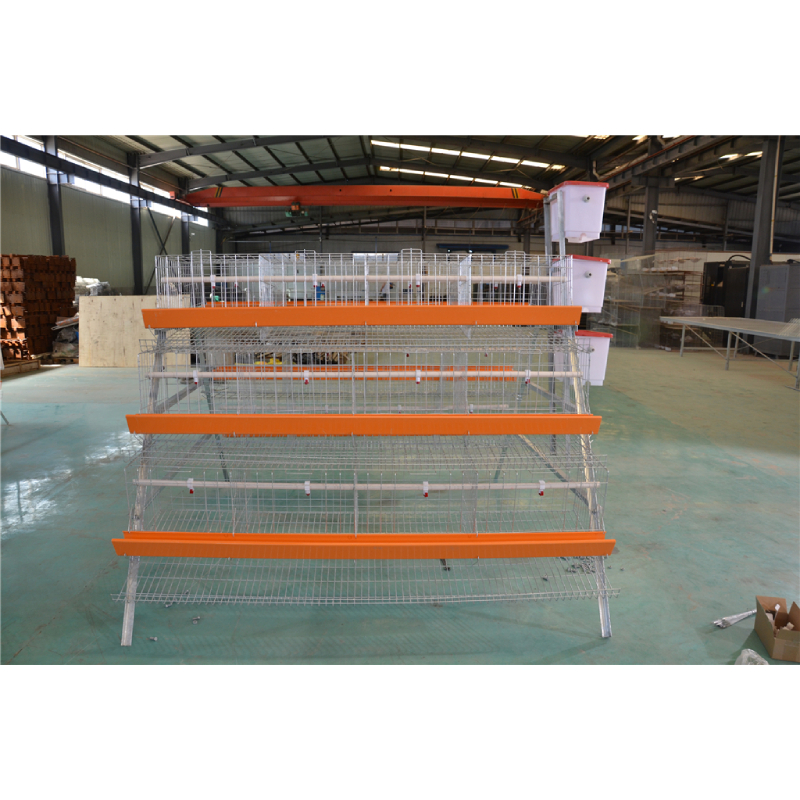european rabbit cage
Nov . 19, 2024 13:56 Back to list
european rabbit cage
The European Rabbit Cage Creating a Comfortable Habitat for Your Bunnies
When it comes to rabbit care, providing the right living environment is crucial for their health and happiness. European rabbits, or *Oryctolagus cuniculus*, are social and active creatures that thrive in spacious and stimulating habitats. To ensure they lead a happy life, creating a well-designed rabbit cage is essential. This article will explore the key elements to consider when setting up a European rabbit cage, including size, layout, enrichment, and maintenance.
Size Matters
One of the first things to consider when building or purchasing a rabbit cage is the size. European rabbits need ample space to hop, play, and explore. Experts recommend a minimum cage size of 6 feet long, 2 feet wide, and 2 feet tall for a single rabbit. If you have multiple rabbits, the cage size should increase accordingly to accommodate their needs and prevent territorial disputes. Remember that the more space you provide, the happier and healthier your rabbits will be.
Layout and Design
The layout of the cage is just as important as its size. A well-designed cage should incorporate separate areas for sleeping, eating, and playing. Use a solid, comfortable bedding material such as aspen shavings, straw, or hay in the sleeping area to provide warmth and comfort. Always avoid cedar or pine shavings, as they can be harmful to rabbits.
Incorporate a designated area for food and water. Use heavy ceramic or stainless steel bowls to prevent tipping and spills. Rabbits need fresh hay daily, as well as a balanced diet of pellets and fresh vegetables. It's also crucial to provide clean drinking water at all times, either in a bowl or a bottle.
For the playing area, consider adding various levels or platforms to promote climbing and jumping. Use ramps or shelves that allow your rabbit to explore vertically, which not only entertains them but also provides necessary exercise. Additionally, include tunnels, hiding spots, and chew toys to keep your rabbits engaged and mentally stimulated.
european rabbit cage

Enrichment and Social Interaction
A rabbit's environment should encourage physical activity and mental stimulation. Providing enrichment is vital to prevent boredom and behavioral issues. Add toys made from natural materials like willow or cardboard, which rabbits can chew on safely. Supervised playtime outside the cage in a safe, enclosed area can also provide great exercise opportunities.
Since European rabbits are social animals, consider adopting a pair. Companionship can greatly enhance their quality of life. However, make sure to properly introduce new rabbits to prevent territorial aggression. Always monitor their interactions until you're confident they can coexist peacefully.
Cleanliness and Maintenance
Maintaining a clean and hygienic environment for your rabbit is essential to their health. Regularly clean the bedding area to prevent build-up of waste and odor. Spot clean the cage daily, removing soiled bedding, uneaten food, and droppings. A thorough cleaning should be done weekly, including washing the food and water bowls.
Ensure proper ventilation within the cage and avoid placing it in direct sunlight, as this can overheat your bunny. Similarly, keep the cage away from drafts that might chill them. If the cage is outdoors, consider moving it to a sheltered area during extreme weather.
Conclusion
Creating a comfortable and enriching habitat for your European rabbits is a rewarding endeavor. By providing a spacious cage, a well-thought-out layout, and opportunities for social interaction and play, you can ensure that your bunnies lead happy, healthy lives. Remember that rabbits are not just pets; they are intelligent, social beings that deserve a nurturing environment. With the right cage setup and care, your European rabbits will thrive and bring joy to your household for years to come.
-
Automatic Feeding Line System-Pan Feeder Nipple Drinker|Anping County Yize Metal Products Co., Ltd.
NewsJul.29,2025
-
Hot Sale 24 & 18 Door Rabbit Cages - Premium Breeding Solutions
NewsJul.25,2025
-
Automatic Feeding Line System Pan Feeder Nipple Drinker - Anping County Yize Metal Products Co., Ltd.
NewsJul.21,2025
-
Automatic Feeding Line System Pan Feeder Nipple Drinker - Anping County Yize Metal Products Co., Ltd.
NewsJul.21,2025
-
Automatic Feeding Line System - Anping Yize | Precision & Nipple
NewsJul.21,2025
-
Automatic Feeding Line System - Anping Yize | Precision & Nipple
NewsJul.21,2025






